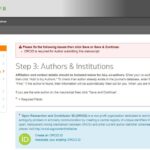This week, we read about the past 100 years of science communication from the perspective of Science News magazine and what a decade of open data sharing on figshare can teach us about the future of open data. We learn which PLS format has the greatest reach and hear the perspective of researchers in Brazil on the geographical disparity in open access publishing. Finally, we share a concise introduction to PLS and learn about the creation of Scottish Universities Open Access Press.
To read:
A century of Science News via Science News | 42-minute read
This year marks the 100th anniversary of Science News magazine. First printed in March 1922, the then called ‘Science News-Letter’ hoped to foster popular support for science while helping people become more well informed about research. The publication was founded at a time when public trust and interest in science was at a low point following World War I, which came to be known as the ‘Chemists’ War’ owing to the use of chemical weapons. In this article, Assistant Editor Maria Temming reflects of 100 years of scientific discovery.
Lessons for the future of open data from 10 years of figshare via The Scholarly Kitchen | 9-minute read
The popular data sharing website figshare has provided open data infrastructure since 2011. In an article in The Scholarly Kitchen, figshare CEO Mark Hahnel reflects on what has been achieved in the past 10 years, and what work still needs to be done. In recent years, the adoption of open access data sharing has accelerated, partly driven by the availability of platforms such as figshare, but mainly as a response to the growing number of major research funders who require open data archiving. However, there are concerns regarding the misuse of open data, questions about data licencing, and discussions about how to best organize such a vast amount of information.
Plain language summaries: which format has the greatest reach? via Plain Language Summaries | 4-minute read
At the 2022 European Meeting of the International Society for Medical Publication Professionals, Shilpa Khobragade, Principal Medical Writer at Lumanity, and colleagues presented their research investigating the Altmetric Attention Scores (AAS) of standalone plain language summaries (PLS), those linked to the original research paper and lay abstracts. Standalone PLS had the highest mean AAS and the greatest number of tweets compared with linked PLS and lay abstracts. Linked PLS had the highest mean number of citations, and lay abstracts had the smallest reach overall.
Geographical disparities in open access publishing: a perspective from Brazil via Nature | 1-minute read
A recent study examined the geographic spread of authors publishing in open access journals and their paywalled counterparts in Elsevier’s ‘mirror journal’ system. Despite having the same editorial boards and standards of acceptance as the paywalled journals, the open access journals published fewer articles by authors from the Global South, owing to the cost of article processing charges. A recent correspondence published in Nature highlights that, for researchers in Brazil, despite article processing charges (APCs) costing the equivalent of months of their stipend, researchers are often not eligible for waivers or discounts. Many researchers instead opt to publish behind paywalls, a practice that may come to an end in a few years when transformative agreements expire.
To engage with:
A great introduction to plain language summaries via Neuro Central | 5-minute read
Plain language summaries (PLS) are a cornerstone of the open access movement. Writing for Neuro Central, Harriet Stanwix of Future Science Group provides a concise introduction to PLS, which makes an effective case for their adoption by researchers. The article highlights how PLS make research accessible to all, and how they are not simply a means of providing information to patients. This is a great introductory resource to share to promote PLS alongside the Open Pharma recommendations on PLS.
To watch:
Scottish Universities Open Access Press via University of Dundee | 9-minute watch
In this video, Dominique Walker, Publishing Officer for the Scottish Universities Open Access Press, explains how libraries in the Scottish Confederation of University and Research Libraries are working together to build and manage an open access online publishing platform. The purpose of the platform is to help Scottish researchers and institutions meet the expanding open access requirements of funders by providing a transparent and cost-effective open access publishing route.
Have you listened to our podcast with Inspiring STEM Consulting about driving positive change in the communication of pharma-sponsored research? Listen to it for free here, along with the rest of the series – featuring how open access saves lives, accelerates discovery and promotes global equity.






